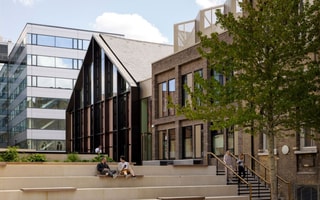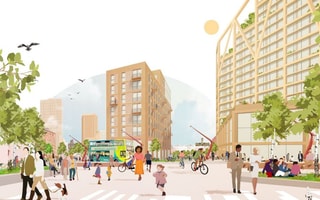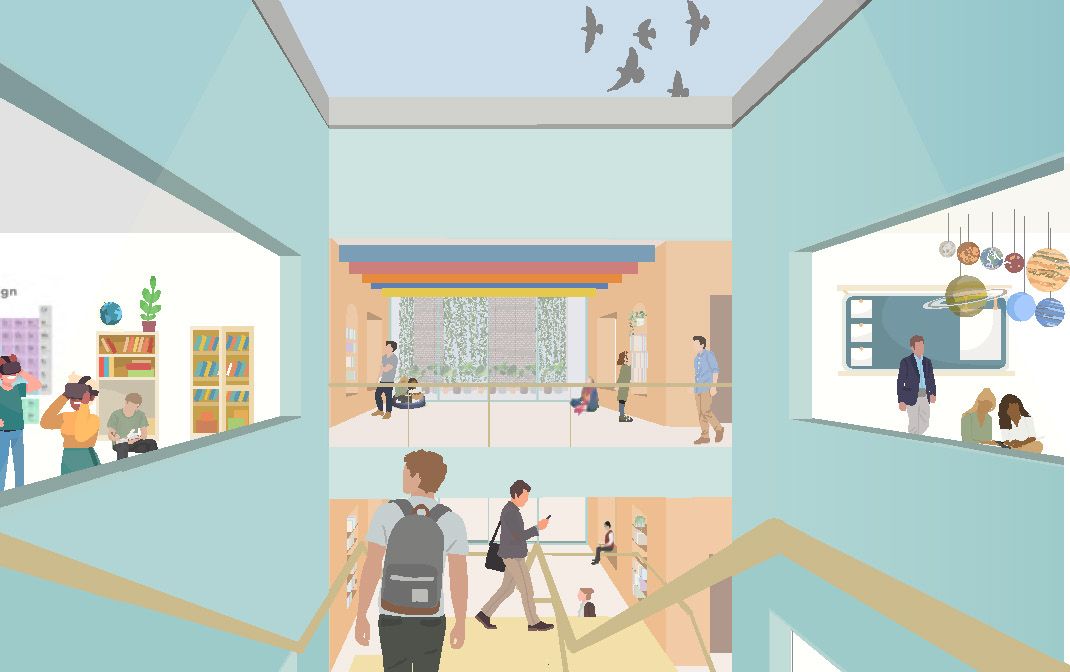
A learning oasis in the city
Amy Whitehead explores a solution to improve and enliven a city using existing buildings and infrastructure.
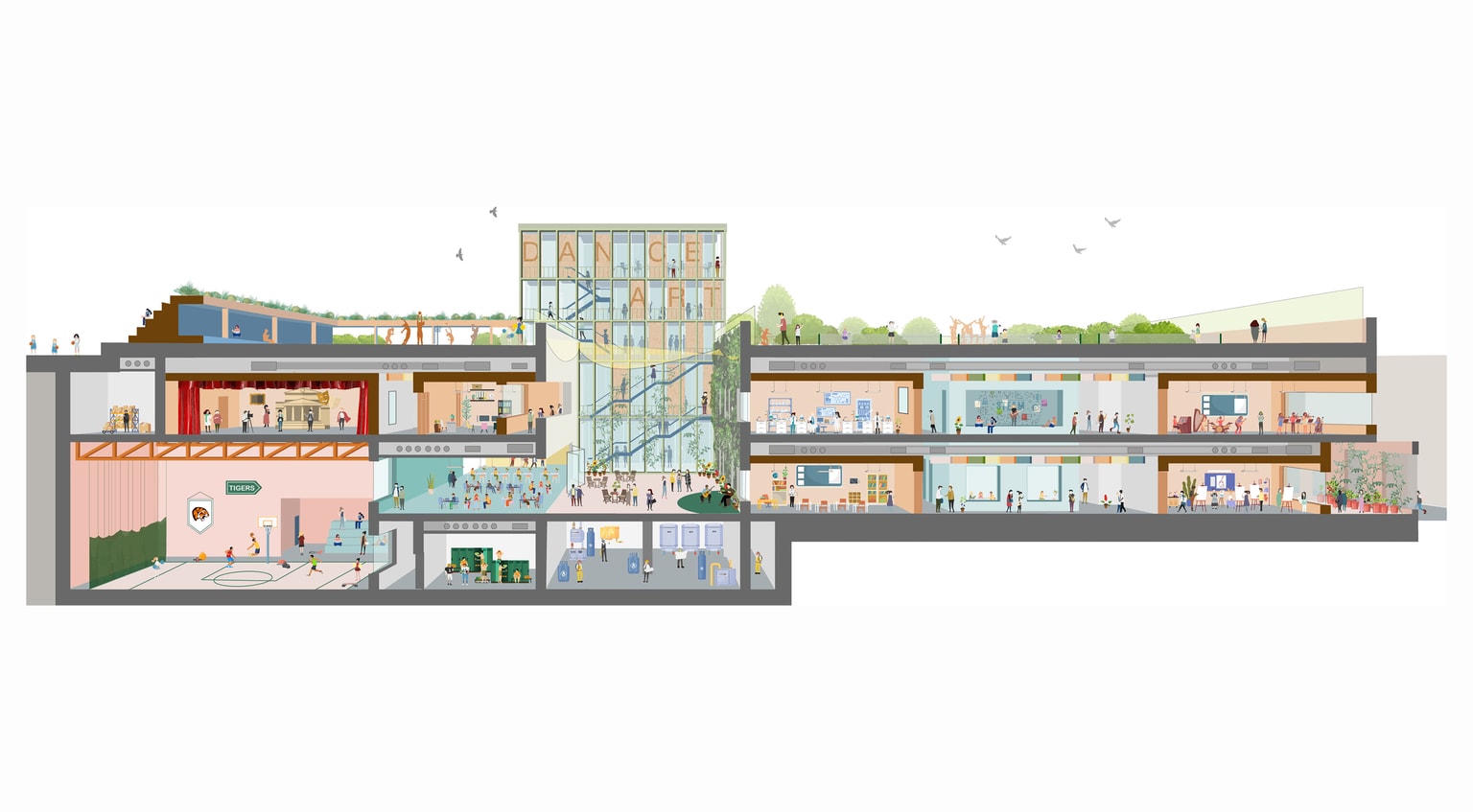
As architects, we have a responsibility to communities, to the environment and to future societies. We must look for solution to the most pressing issues facing our cities; and critically important is of course the education of future generations, supported by a pipeline of new schools. However, ‘new’ doesn’t have to mean ‘new build’; as we know, the most sustainable building is one that already exists.
So how does it work? Can we return prosperity to the high street by providing old buildings with a new identity? Could we, for example, repurpose vacant retail units to create a new secondary school that is also open to the local community? Can we find more opportunities to bring new life to an existing asset, whilst addressing climate change and meeting the need for local urban regeneration?
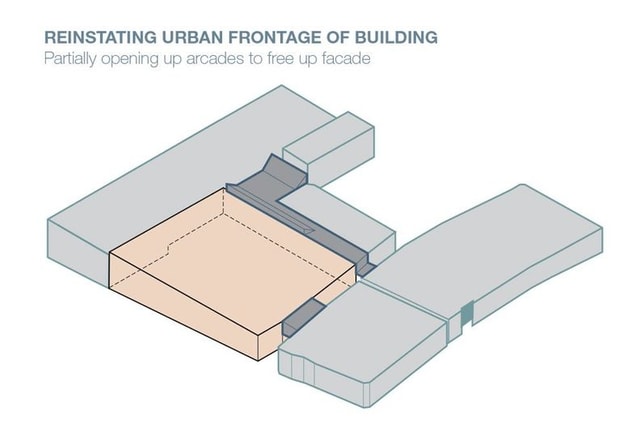
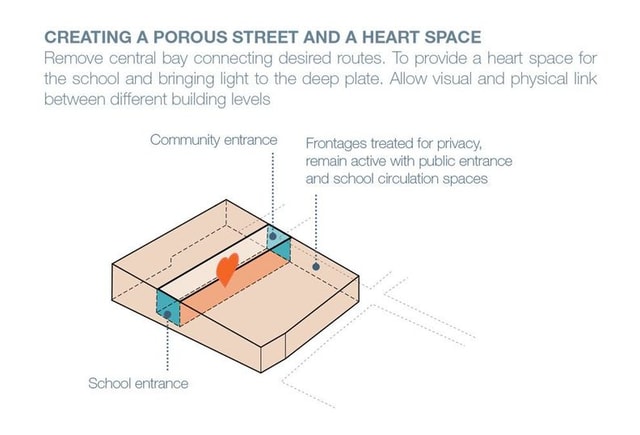
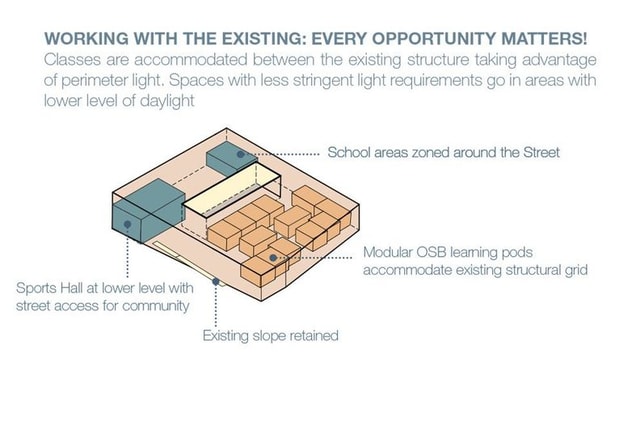
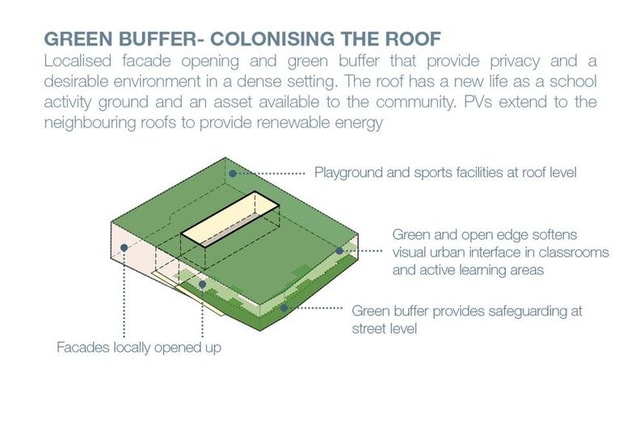
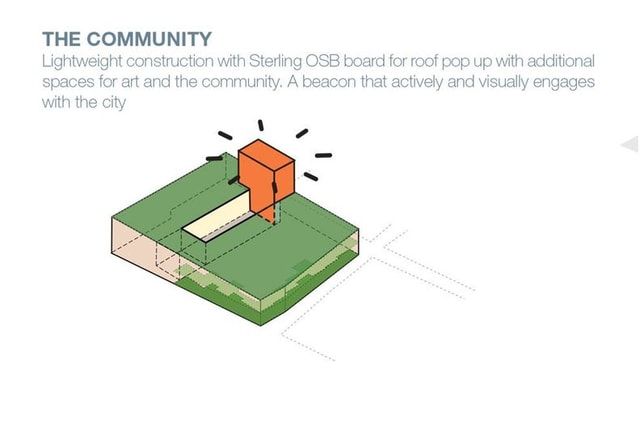
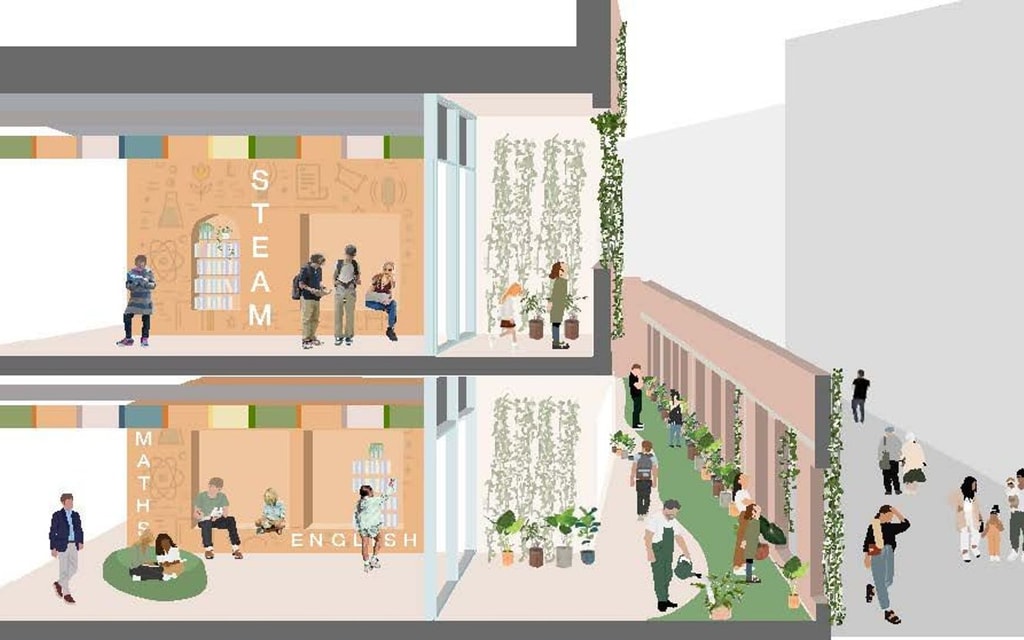
As part of a RIBA competition supported by Sterling OSB, we applied our collective responsibility and innovative thinking to the city of Exeter. This is a city with a rich history and promising retail sector, where we realised there is a noticeable gap in recreational spaces within the urban core. The Liveable Exeter initiative, set to materialise by 2040, seeks to address this and other urban challenges. With prominent retailers vacating central locations, buildings like Debenhams remain empty, presenting an opportunity for adaptive reuse at the heart of the city.
Our proposal explores the possibility of a conversion of two major retail units in Exeter's Guildhall Shopping Centre into a secondary school and community hub. Retail floors lend themselves to being reinvented. Thanks to their large open floorplates, expansive structures and generous heights, they offer optimum flexibility for designing engaging learning environments. Could this be the ideal opportunity for adaptive reuse as a method of delivering exemplary new school facilities?
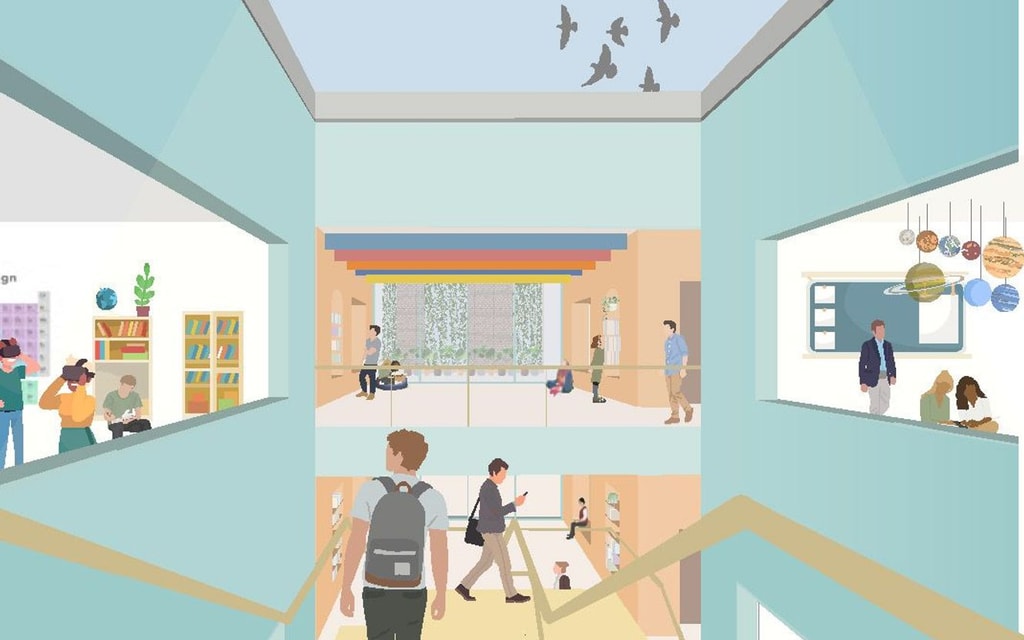
While repurposing such spaces often poses logistical challenges, including complex layouts and safety considerations, we know that innovative design strategies can mitigate these obstacles and create places that people want and need.
The vision for this site extends beyond traditional educational spaces, aiming to create a multifunctional hub. It is what we are calling a "learning oasis" within the city. We prioritise sustainability, incorporating elements like natural light and greenery to enhance the learning environment and promote environmental stewardship among the building’s users. We know from our experience that spaces like this improve air quality and engage students in active learning. Designs like this go beyond aesthetics and sustainability; they have long term and social benefits for our cities by being inclusive and multipurpose urban facilities.
We advocate for community integration, envisioning the school as a space accessible to all residents beyond school hours, increasing evening activity and adding a layer of passive security, making the city centre safer. By opening up facilities like the school sports areas to the public, we foster community engagement and create a sense of ownership. We move from a model of placemaking to placekeeping, where buildings assert their presence by serving their local communities in the best possible ways.
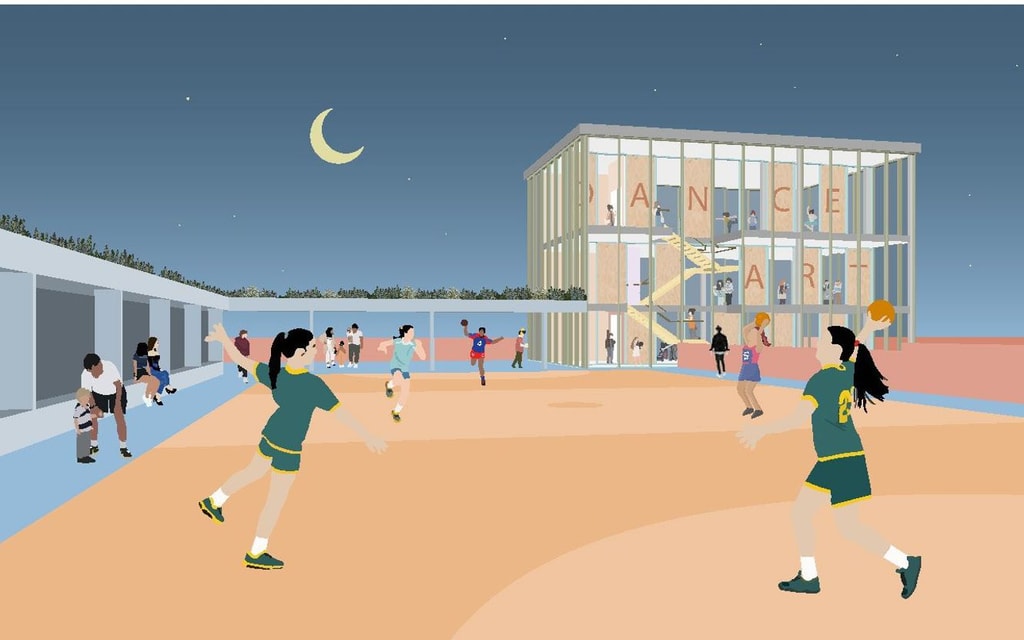
Adapting an existing building for another purpose offers the opportunity to extend the life and viability of a building, retain a city’s cultural heritage and identity, as well as allow the space to be reconfigured to meet today’s modern accessibility and design standards – a topic we explore in our The Good City initiative. We must carefully reinterpret existing structures and their connection to urban landscapes. This process often includes innovative approaches such as the removal of cluttered sections to create inviting central areas, allowing natural light to permeate deep floor spaces. We design the building to retrospectively house biophilic walls, lightwells and PV panels. Integration of modular learning pods within the building's framework facilitates flexible use and informal gatherings. Sustainability plays a key role, with a focus on using the building's structural features for energy efficiency and repurposing underutilised spaces like rooftops for rainwater harvesting, beehives or other green initiatives.
In Exeter, this idea looks at how a disused space could become a beacon of inclusion and activity; it is a brilliant way to energise the public realm and skyline without demolition and carbon hungry building techniques. This certainly aligns with the core aspirations of the Department for Education, as they strive towards delivering GenZero sustainable schools for the future. And our idea isn't just for Exeter. We think vacant buildings in other cities could be preserved and enhanced to realise their potential. By turning them into healthy and functional places that work for the city but can also be used for the community, we can make our cities better for everyone.
So, let's get creative and make our cities more exciting places to be!

Explore Old Buildings New Beginnings
Related Links
A modern vision for education and community
Lindsey Mitchell explores how school design in Scotland is embracing inclusivity, sustainability, and community connection
Subterranean solutions
Central Foundation Boys School in London stands as a testament to the ingenuity and expertise in civil and structural engineering.
The regeneration game
Nestled across the Mersey from Liverpool, The Wirral holds a world of potential waiting to be unlocked.
-1330x831.jpg?u=2025-07-25T14:00:23.940Z&w=320&q=90)
